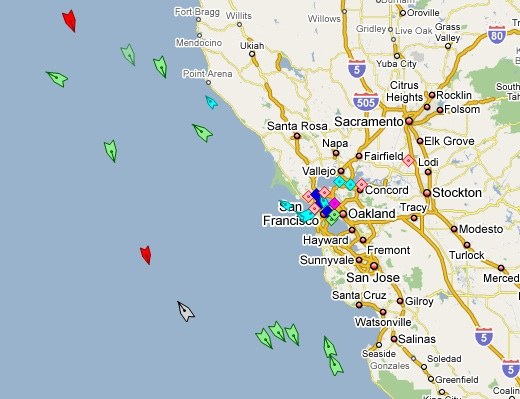
All the King’s Horses . . . and Ships
As if AIS — Automatic Identification System — isn’t already the coolest navigation/safety tool since the compass, we recently found a link that makes it the coolest ‘video game’ since Tetris. If you go to www.marinetraffic.com/ais, you will find that you can track every ship currently broadcasting on AIS in many of the world’s busiest areas. (Oddly, some very busy areas, such as Panama, are not yet represented.) With an estimated 40,000 ships now using the system, that’s a lot of tracking. If you’re unfamiliar with AIS, the Class A transponders that ships are required to carry broadcast an amazing amount of information — name, flag, position, speed, course, type of cargo (some even include a photo of the ship) — in a signal that can be picked up and displayed on most electronic chart systems if you have a Class B AIS receiver, or, in this case, simply a computer with internet access. While it doesn’t eliminate all danger of collision — its raison d’etre — AIS has been getting rave reviews from everyone we’ve talked to.

Class B transponders are ‘lite’ versions of the larger Class A units. They come in both receive-only and transmit-and-receive versions. The transmit function of Class B AIS units does not put out as much information, or transmit as far as a Class A unit, but it uses a lot less power and, most importantly, is more affordable. While transmit-and-receive Class B tranponders have been available to yachts the world over for several years, the ‘transmit’ feature was banned in the U.S. until late last year. The FCC finally gave their blessing in November, so now you can get both types here. Recieve-only Class B units for yachts can be had for as little as $200, while receive-and-transmit ones start around $800.
On the ‘Live Ships Map’, yachts are noted in magenta. There were even a few underway in the Bay as this was written.
For more on the techie end of how AIS works, visit www.navcen.uscg.gov/enav/ais.
